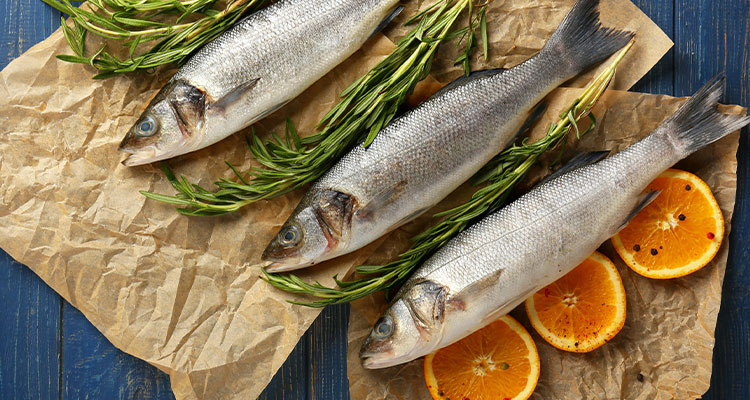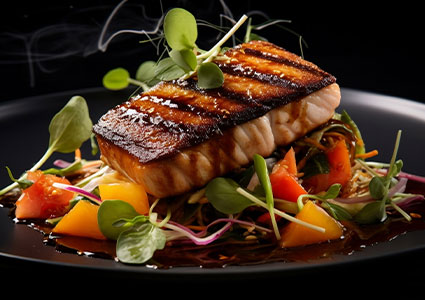
How Lusamerica Foods is leveraging sustainable fishing practices to bring back a once booming market
Lusamerica Foods (Lusamerica) offers grocery retailers, foodservice operators, restaurants, and broad-line distributors a reliable source of domestic and imported seafood with innovative value-added seafood products. Director of Communications and Sustainability, Peter Adame, shares a more detailed overview of the business as it celebrates its 50th Anniversary: “It all started with a first-generation Portuguese couple, Fernando and Ana Frederico, who moved to California in search of the American Dream. They founded Lusamerica Foods in 1975 and, fifty years later, it continues to be a family-owned and operated seafood wholesaler, processor, and distributor, and has grown to be one of the largest along the US West Coast.
 “With around 500 employees, our headquarters is in Morgan Hill, CA, just south of Silicon Valley and the San Francisco Bay Area. We also have facilities just outside of Seattle, WA, and in Los Angeles, California. Between those three hubs and our own fleet of trucks, we distribute fresh and frozen seafood to the whole West Coast, as well as some frozen seafood nationally.
“With around 500 employees, our headquarters is in Morgan Hill, CA, just south of Silicon Valley and the San Francisco Bay Area. We also have facilities just outside of Seattle, WA, and in Los Angeles, California. Between those three hubs and our own fleet of trucks, we distribute fresh and frozen seafood to the whole West Coast, as well as some frozen seafood nationally.
“We have been investing a lot more in local seafood, which has been exciting. We started leasing a dock in Moss Landing Harbor, which is halfway between Monterey and Santa Cruz. It’s been exciting to see the company building more direct relationships with fishermen. Alongside leasing the dock in Monterey Bay, we have also invested in a new hoist, a new ice hopper to give commercial ice to the fishermen, a deicer for when we’re off-loading the fish, and a new processing line at our facility where we fillet all kinds of local fish by hand. We distribute to all kinds of businesses, everything from some of America’s largest grocery store retailers and food service companies to small mom-and-pop restaurants to hotels, universities, tech companies, and even entertainment studios. We also have some of our own private brands as well, like Monterey Bay Seafood which can be found at a major retailer throughout Northern California.
“As a wholesaler, we have a huge product list; we work with over 100 different species. Each of those species tends to have several different product forms, depending on whether they’re sold fresh or frozen, or as whole fish, fillets, steaks, or portions, for example. A lot of processing today is done abroad in the seafood world, so we’re fortunate to be able to shorten our supply chains by receiving whole fish and filleting in-house. Salmon is our most popular item. We sell significant amounts of wild salmon from Alaska, but we also do a lot of farmed Atlantic salmon from Norway, Chile, and Canada. Dungeness crab is also a popular product. We’re able to cook crab now at a new sister-location in Port Angeles, Washington, called Olympic Peninsula Seafood. It’s been an exciting new endeavor that has grown our processing capabilities while also opening more opportunity to work directly with fishermen in the Pacific Northwest, many of whom are tribal fishermen.
“These days we’re also doing more value-added items. For example, we have our own in-house chef who helps with different recipes, as well as a prepared foods team. Together we produce our own in-house ceviche: one with octopus, one with shrimp, and one with surimi (imitation crab). We also have items like marinated salmon, salmon burgers, kebabs, and stuffed salmon.”
Conservation success story
Sustainability is an especially salient topic for businesses involved in seafood. Peter explains how the company’s focus on local fish is only possible thanks to earlier conservation efforts and regulations to protect current healthy populations: “By the late 1990s, stocks on the West Coast had been so overfished that intervention was necessary. The government initiated a buyback program to reduce the number of vessels. No-fish zones were put in place, and gear modifications were mandated to ensure only larger fish were caught. They also implemented 100 percent observer coverage, which entails placing an observer on each vessel to monitor catch data, as well as fishing quotas.
conservation efforts and regulations to protect current healthy populations: “By the late 1990s, stocks on the West Coast had been so overfished that intervention was necessary. The government initiated a buyback program to reduce the number of vessels. No-fish zones were put in place, and gear modifications were mandated to ensure only larger fish were caught. They also implemented 100 percent observer coverage, which entails placing an observer on each vessel to monitor catch data, as well as fishing quotas.
“Initially, scientists thought it would take 60 years for some of the local fish stocks to recover, but instead, they were rebounding in just 14 years. It’s a brilliant demonstration of effective conservation efforts that showcase how seafood is sustainable when managed responsibly. In the US, between 80 and 90 percent of the fish we consume is imported, so having healthy stocks that are fished in a sustainable manner back along our home coastline will be key to getting back to our local roots, shortening supply chains, and cutting carbon emissions. There are some fish whose habitat is not local, so they must be imported, but there are many species that can be sustainably harvested from US waters if we manage our natural resources using science-based management. It’s a brilliant conservation success story.”
This recovery presents significant growth potential for the business going forward. Peter concludes by outlining the company’s vision to capitalize on these opportunities: “More local seafood will become the norm. We are still working on building back those markets because not everyone is familiar with these local fish. We would love to see domestic seafood growing more, but also seafood in general as a category; it’s extremely healthy. It’s so rich in omega-3s, vitamins, minerals, and antioxidants. When you compare it to other protein sources, it’s night and day in terms of the health benefits.
“When you look at the Mediterranean diet or Japanese cuisine, which are so rich in seafood, you can see there are health correlations and overall support by nutritionists, so seafood is something everyone can be enjoying more. We’re always interested in growing our company and working with other businesses to bring them a wide variety of delicious seafood. We pride ourselves on being ‘the ultimate in quality seafood’. When it comes to processing, we have a wonderful food safety team and quality control team; they’re always monitoring temperature, implementing hazard analysis control points, and preventing cross-contamination allergen risks.”
Moving forward, as the company celebrates fifty years, Lusamerica aims to bolster distribution, and by highlighting its direct partnerships with fishermen, grow seafood consumption overall. The company is investing and partnering with West Coast fisheries, pushing to make high-quality seafood the norm, and encouraging more generations to enjoy the fruits of the sea.